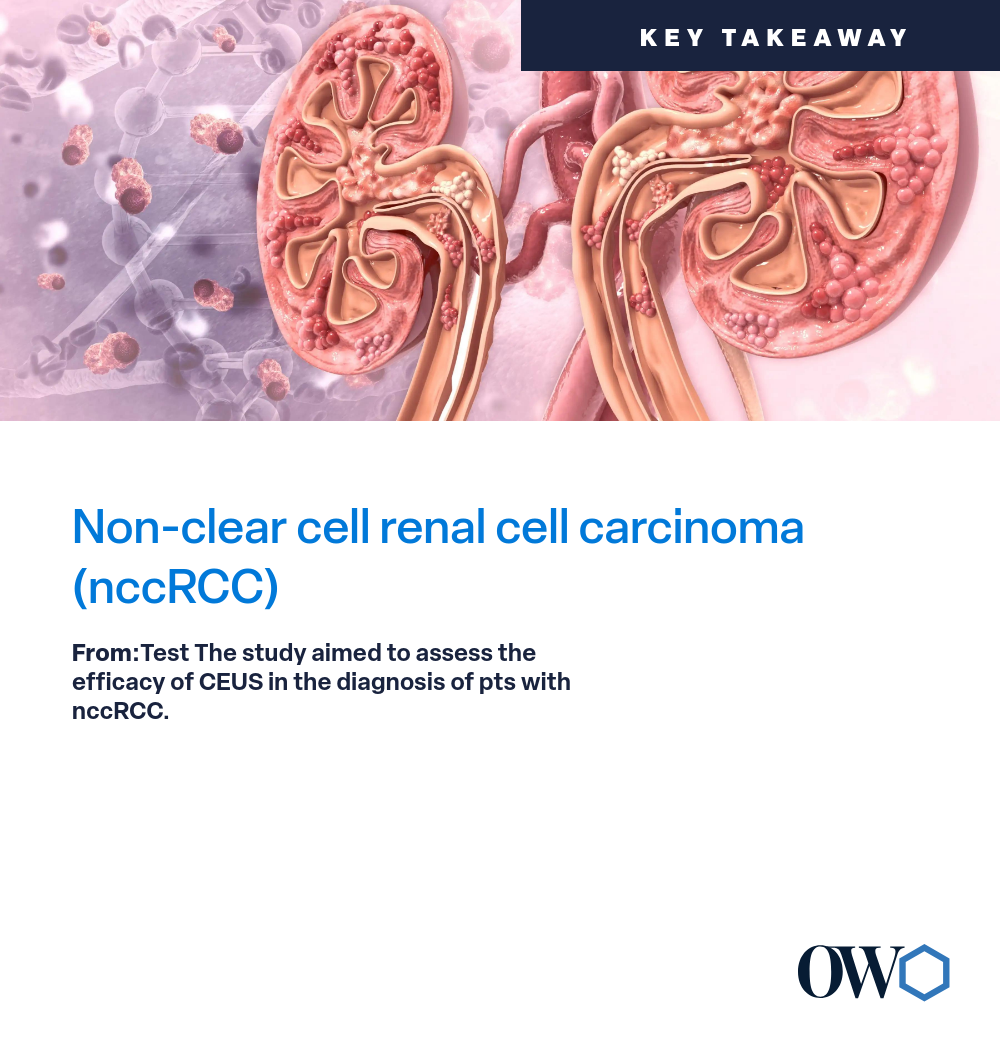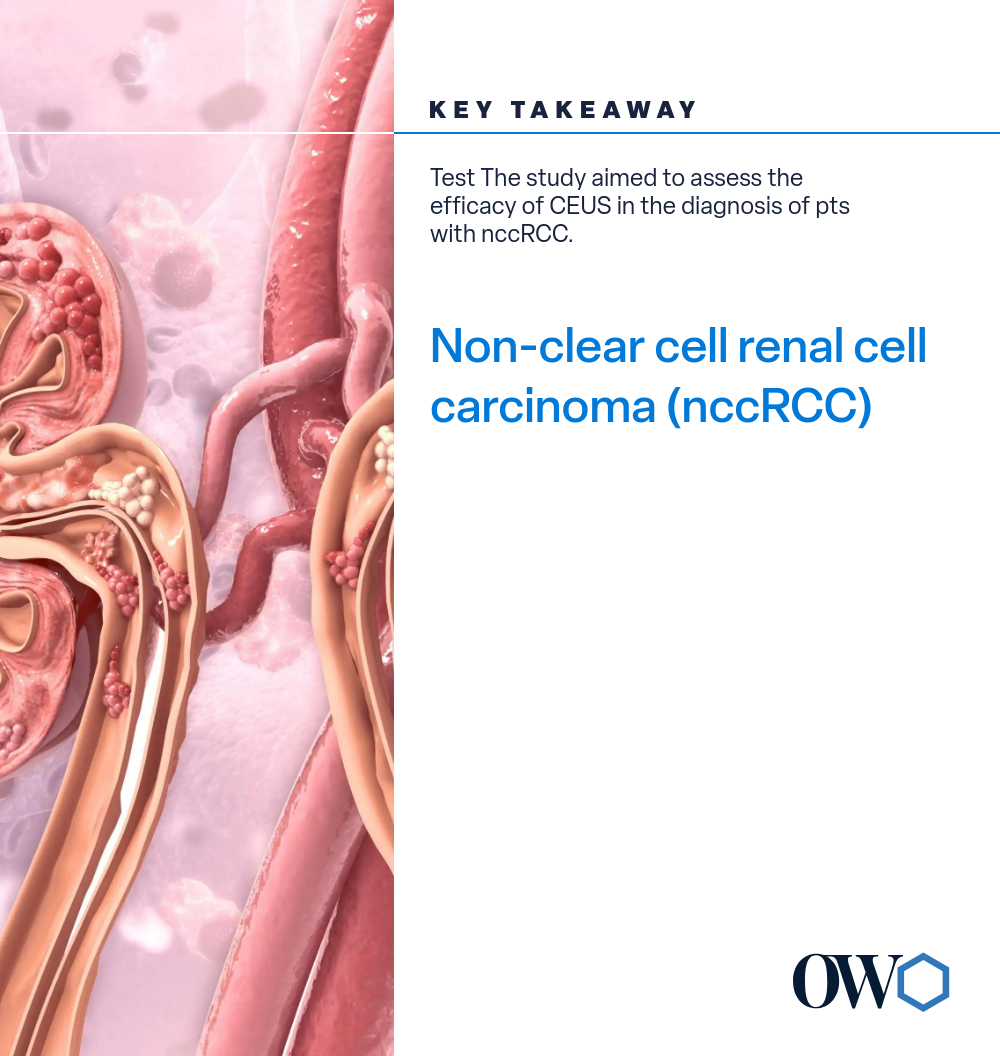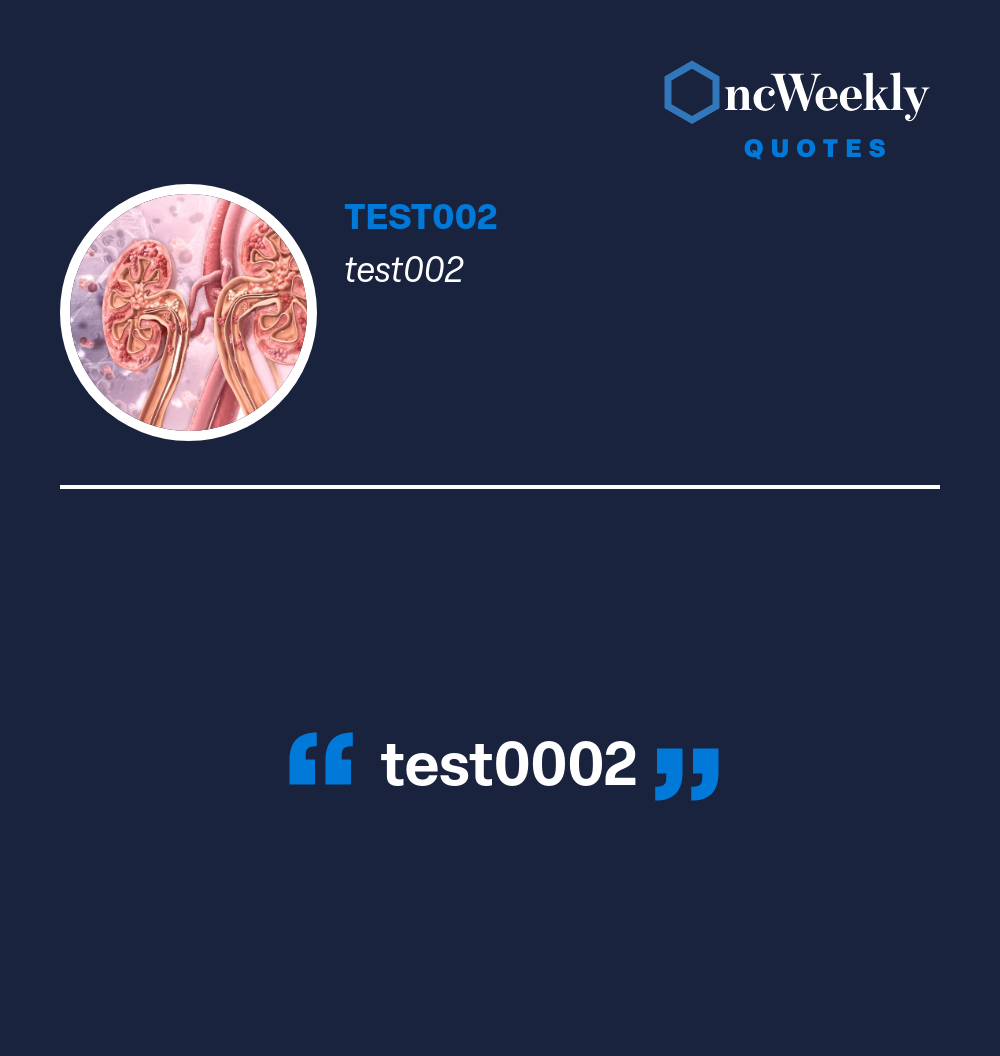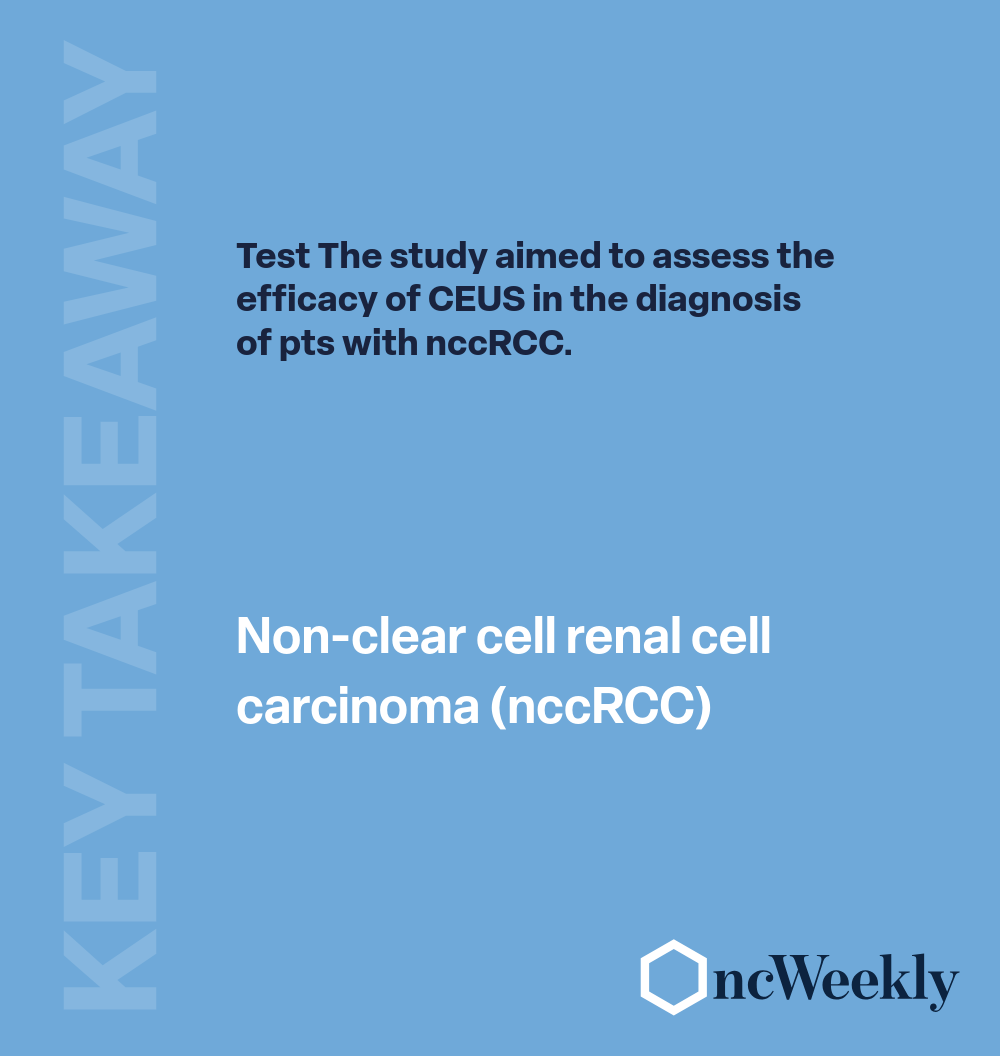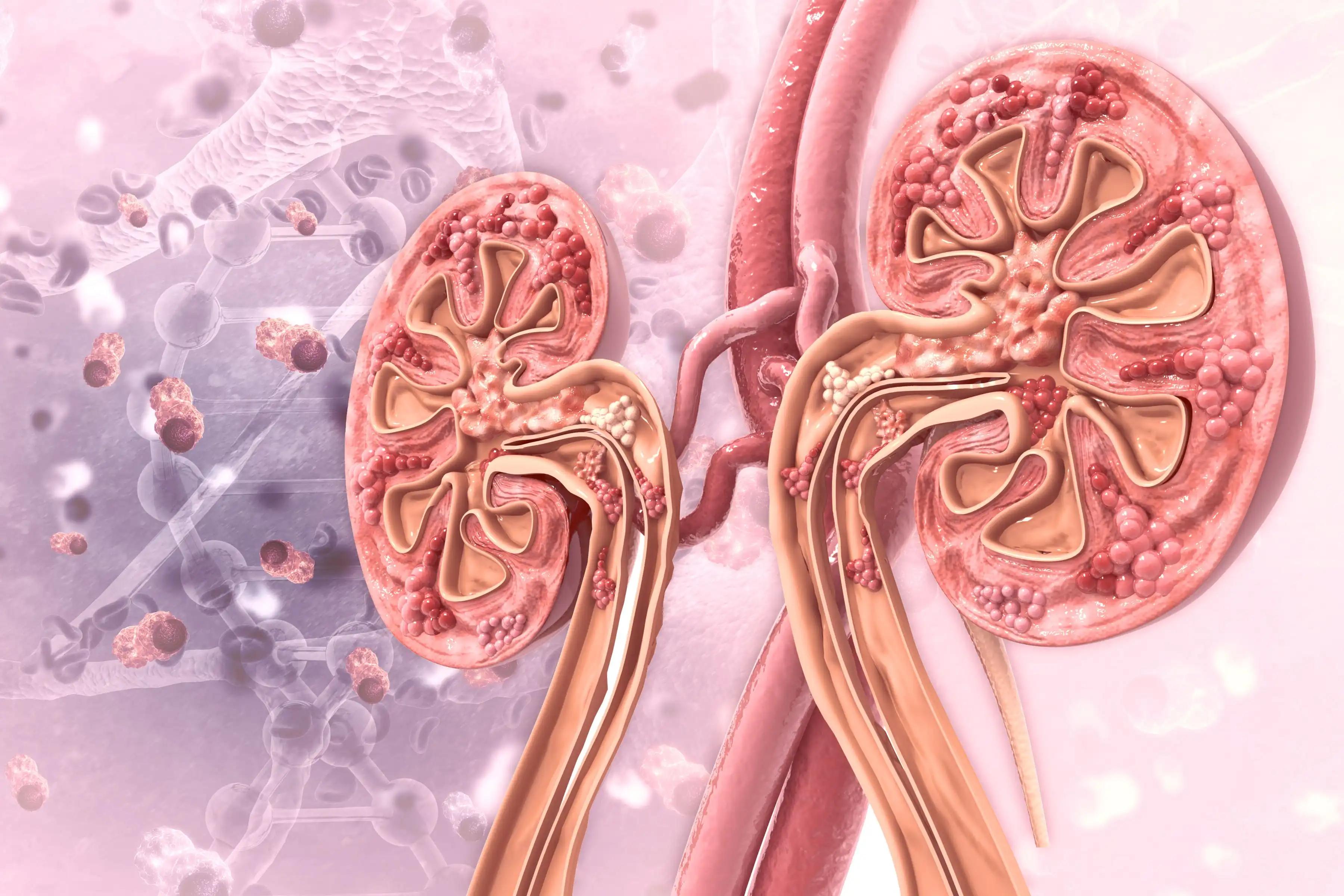KEY TAKEAWAYS
- The study aimed to assess the efficacy of CEUS in the diagnosis of pts with nccRCC.
- Researchers noticed that CEUS offered a better differential diagnosis of nccRCC vs ccRCC.
Non-clear cell renal cell carcinoma (nccRCC) is a rare type of RCC, hard to diagnose with contrast-enhanced ultrasound (CEUS) due to its varied features. Summarizing CEUS characteristics is crucial for differentiating nccRCC from clear cell RCC (ccRCC). Therefore highlighting the manifestation of CEUS is essential for differentiation of nccRCC from ccRCC.
WeiPing Zhang and the team aimed to evaluate the diagnostic qualitative and quantitative efficacy of CEUS in diagnosing nccRCC.
They conducted a retrospective study including 21 patients (pts) with confirmed nccRCC following surgery and assessed the characteristic conventional ultrasound and CEUS imaging features. The paired Wilcoxon signed-rank sum test was employed to compare differences in CEUS time-intensity curve (TIC) parameters between the lesions and the normal renal cortex.
Results revealed that routine ultrasound showed the following primary characteristics in the 21 nccRCC cases: hypoechoic appearance (10/21, 47.6%), absence of liquefaction (18/21, 66.7%), regular shape (19/21, 90.5%), clear boundaries (21/21, 100%), and absence of calcification (17/21, 81%). Color Doppler flow imaging (CDFI) indicated a low blood flow signal, with only 1 case showing grade III.
Qualitative CEUS analysis demonstrated that nccRCC predominantly exhibited slow progression (76.1%), fast washout (57%), uniformity (61.9%), low enhancement (71.5%), and ring enhancement (61.9%). Quantitative CEUS analysis revealed that parameters such as PE, WiAUC, mTTI, WiR, WiPI, WoAUC, WiWoAUC, and WOR in the lesions were significantly lower than those in the normal renal cortex (Z = -3.980, -3.563, -2.427, -3.389, -3.980, -3.493, -3.528, -2.763, P < 0.001, < 0.001, = 0.015, = 0.001, < 0.001, < 0.001, < 0.001, = 0.006). However, there were no significant differences in RT, TTP, FT, or QOF (all P > 0.05).
The study concluded that nccRCC exhibits distinctive characteristics on CEUS, including slow progression, fast washout, low homogeneity enhancement, and ring enhancement, which can aid in distinguishing clinical subgroups of pts with nccRCC from ccRCC.
The study was funded by the Administration of Traditional Chinese Medicine Science and Technology Plan of Jiangxi Province (2021A060) and the Health Commission Science and Technology Plan of Jiangxi Province (202210452).
Source: https://pubmed.ncbi.nlm.nih.gov/38886684/
Zhang W., Wang J., Chen L., et al. (2024). “Qualitative and quantitative assessment of non-clear cell renal cell carcinoma using contrast-enhanced ultrasound.” BMC Urol. 2024 Jun 17;24(1):129. doi: 10.1186/s12894-024-01514-8. PMID: 38886684.
